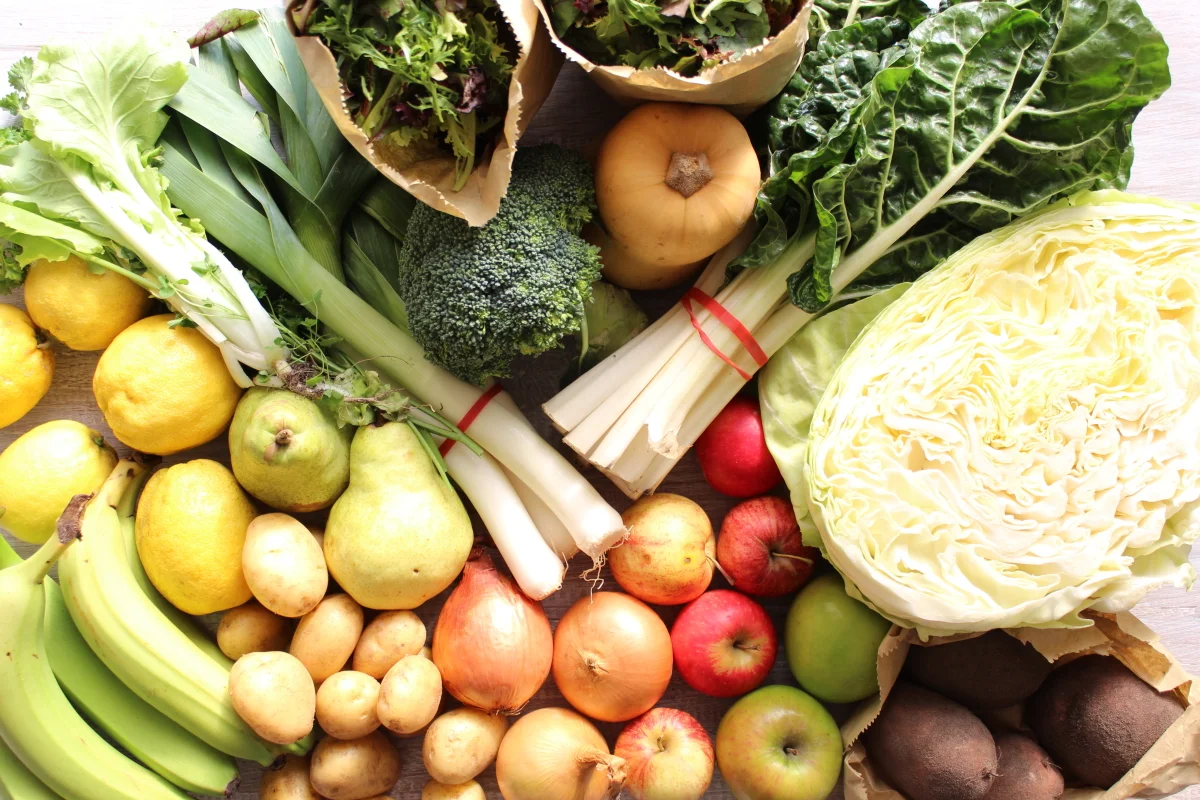How many foods should we eat in a day?
Although I am a Nutritionist, I am also very much a foodie and LOVE cooking, eating, shopping and anything to with food. So I probably take for granted that naturally I get a lot of variety in my diet.
However it has recently come to my attention that people are shocked when I mention that we should all aim to eat at least 20 different foods in a day, and at least half of these should be different each day. Take note that I said ‘at least’ as for exceptional health you want to be aiming for 30.
As humans we are such creatures of habit that if something is easy we tend to do it over and over again. So a lot of us probably eat the same breakfast, lunch and maybe even dinner most days of the week. The average Aussie can be known to have just 17 different foods in a week! You might be thinking, if it’s a healthy meal then so what if I eat it all the time? Well let’s have a look at why variety is so important and why you might need to add some more foods into your week.
Nutritional requirements
No single food contains all of the nutrients your body needs. In fact it would be a struggle to reach the recommended daily intakes each day, even with a varied diet. Therefore we can better aim to reach these targets across a week, but sticking to the same foods each day limits how many nutrients you are taking in over the week. There’s no doubt that higher your nutrient intakes through diet diversity, especially at a micro level (eg. Vitamins and minerals), the better your chances of living a heathier, longer life and the lower your chances of lifestyle illnesses such as cardiovascular disease, obesity, cancer and diabetes.
Nutrient synergy
Nutrients work in synergy with each other and other molecules to provide their beneficial effects. For example, our fat soluble vitamins need healthy fats to be transported and utilised, calcium requires magnesium, vitamin D and vitamin A to be absorbed optimally and iron is more bioavailable when Vitamin C is present. By including many different foods in one meal you are more likely to get better bang for your buck when it comes to nutrient efficiency.
Antioxidants
We know that antioxidants play a powerful role in reducing inflammation and fighting oxidative stress and we also know that best way to get your antioxidants is by consuming different coloured fruits and vegetables. Research indicates that moderate amounts of many different foods is more beneficial for antioxidant activity than large amounts of just a few foods as extremely high levels of some antioxidants can actually be detrimental to health. With over 12,000 antioxidants available to us the only way to possibly include as many of these as we can is through diversity of the food we eat.
Microbiome
If you’re unsure about the microbiome be sure to read up on my previous article here, but hopefully most of you know that our microbiome is our eco system of bacteria in our digestive tract and is responsible for a range of things from our immunity, how we store fat, regulating glucose levels, controlling appetite, digestion, mental health, hormone and neurotransmitter production and determining our disease risk. Our microbiome is highly influenced by the food that we eat with a change in diet for just two weeks showing a shift in the balance of bacteria that are present in our gut. We want the healthy bacteria in our gut to flourish and maintain balance with other bacteria present and the best way to do this is to expose our digestive tract to a large variety of food.
Allergies and intolerances
Further to the point above in regards to your microbiome balance, studies have shown that diet diversity leads to fewer allergies and intolerances. If you limit the variety of food you have, and constantly consume the same food over and over again you can increase your risk of developing an intolerance to that food, hence variety is key!
Compliance
The final reason for including variety in your diet is to keep things interesting! Healthy eating can be a chore for some people and more often than not when these people tell me their diet it’s the same old boiled eggs for breakfast, tuna and salad for lunch and broccoli and chicken for dinner. Seriously people, no wonder it’s a struggle to eat that every day, you couldn't get more boring and tasteless if you tried! Get creative with your meals by adding more ingredients and you will not only find it satisfies you more in terms of hunger, but it will taste so much more delicious!
So the aim is to stick to at least 20 different foods a day, even up to 30 if you can. The most nutritious way to do this is to use vegetables to get to your quota as the aim is not to significantly increase the portions or energy intake of our meals but to eat the same amount of food just with many more different colours and ingredients on the plate. In terms of sustainable, long term healthy eating and your relationship with food, counting the number of foods is much better than counting calories or kilojoules in my eyes!

